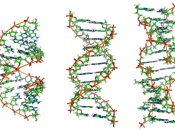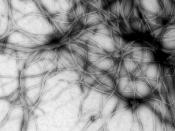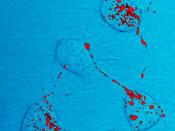The True Nature of Prions Research conducted only over the past couple of decades has unveiled a new type of infectious agent quite unlike all currently known bacteria and viruses. This pathogen, which causes fatal damage to the brain and surrounding central nervous system of humans and other mammals, is called a prion. It has not been completely resolved as to how these agents propagate or how they are composed. The word itself derives from "ÃÂproteinaceous infectious particle,' which refers to a recently determined hypothesis that the infectious agent causing these diseases consists only of protein, with no nucleic acid genome (all previously known pathogens, such as bacteria and viruses, contain nucleic acids which enable them to reproduce). While one current hypothesis deals with the structural nature of these newly discovered agents, the other recently proposed hypothesis attempts to answer the question of replication. The new line of evidence appears to support the theory that the prion interacts with the host cells to turn on the regulator genes.
This gene then begins to manufacture new proteins identical to the prion (Prescott 388-89).
In an effort to support the first idea that prions have no genetic material, the scientists first subjected a prion sample to enormous amounts of ultraviolet radiation. Nucleic acids are relatively fragile molecules, and ultraviolet light easily breaks some of the bonds between the individual atoms of the genetic material. Proteins, on the other hand, form stronger intermolecular bonds and are better equipped to withstand the higher radiation levels. Using a variety of other methods to study the sample, observing things like molecular mass and particle size, the scientists found that the prion particles remained entirely intact (Prusine).
Another way to damage nucleic acids is to introduce the molecule to higher temperatures. It was not surprising...


